CT News Junkie (Digital literacy research by faculty emeritus Don Leu is mentioned)
The Strategy Playbook for Educational Leaders
Editor’s Note: The following is an excerpt from Chapter 1 of The Strategy Playbook for Educational Leaders: Principles and Processes (Routledge, 2020), a new book co-authored by Neag School Associate Professor Jennie Weiner and her colleague Isobel Stevenson, director at the Connecticut Center for School Change.
The volume is a how-to resource designed for superintendents, central office staff, principals, and teacher leaders that looks to “provide leaders with a concrete framework for a strategic improvement plan, helping educators link the ‘principles’ to ‘processes’ of planning.” This excerpt has been published here with the publisher’s permission.
From The Strategy Playbook for Educational Leaders
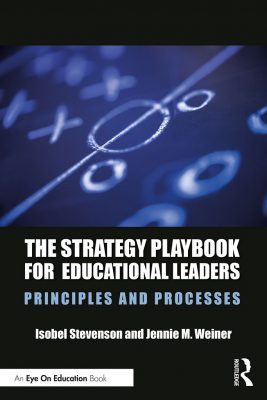 Perhaps you remember what school improvement planning was like in the 1990s, when total quality management (TQM) and site-based decision-making were in vogue. As with many innovations, sometimes a lot is lost in translation between the idea and its implementation. In the case of TQM, the result was often a lot of focus on goals that were unrealistic or did not promote equity, and on interventions that tended to be more oriented toward compliance than continuous improvement.
Perhaps you remember what school improvement planning was like in the 1990s, when total quality management (TQM) and site-based decision-making were in vogue. As with many innovations, sometimes a lot is lost in translation between the idea and its implementation. In the case of TQM, the result was often a lot of focus on goals that were unrealistic or did not promote equity, and on interventions that tended to be more oriented toward compliance than continuous improvement.
First, there was a heavy emphasis on goals. Outcomes were supposed to be specific, measurable, attainable, realistic, and timely (SMART), and a lot of time was spent making sure this occurred. It was easy to get the impression that the goals themselves were what mattered — if you chose the right goal, you would be more likely to meet it. It was as if the goals themselves had the power to produce good outcomes, regardless of the resources available to enact them. As a result, those in schools and at the central office spent a lot of time perseverating over the goals and their semantics.
We have both sat in very long meetings in which teams spent hours coming up with the “right goal.” For example, there were the many high school teams who struggled to agree on the right graduation goal. They asked, “Should we make the goal that 100% of incoming freshmen graduate in four years, even if we don’t think it’s realistic? Because if we don’t, does that mean we are saying that we don’t care about all kids? Plus the goal really is that 100% graduate. But if we do say 100% and we don’t meet that goal, will we get in trouble? Should we say six years? How about five?” When these are the questions, there are no right answers.
It was easy to get the impression that the goals themselves were what mattered — if you chose the right goal, you would be more likely to meet it. It was as if the goals themselves had the power to produce good outcomes, regardless of the resources available to enact them.
It often felt that it was important to choose BHAGs — big, hairy, and audacious goals — regardless of whether they were rooted in any real evidence or grounded in goals of equity and inclusion. The format of the Adequate Yearly Progress goals associated with No Child Left Behind was an example of this orientation. Not choosing BHAGs became an indicator that you weren’t serious about improvement, or that you weren’t willing to work hard enough to reach them. In the worst cases, it was thought that merely creating a BHAG was a predictor of reaching it.
The result of these struggles over goals was the continued piling on of consequences for underperforming schools, the demoralization of the educator workforce, and — important for our discussion — a sense that planning was inconsequential or even foolhardy. It turns out not to be true that an ambitious goal inevitably leads to an amazing result.
It turns out not to be true that an ambitious goal inevitably leads to an amazing result.
It was based on these often unrealistic and problematic goals that school improvement teams built their plans. Frequently presented as a list of tasks to be completed or a template to be filled out, these plans tended to be procedural in nature (first, second, third, etc.) and focused on things like when committees would meet to talk about the goal, who was going to do what, what training would be provided, and the date by which all this was going to be accomplished. Each goal had its own comprehensive list of action steps, with some plans growing unmanageably long. Isobel confesses to writing one as a principal that was more than 70 pages, and Jennie remembers reading a district plan that was over 270 pages!
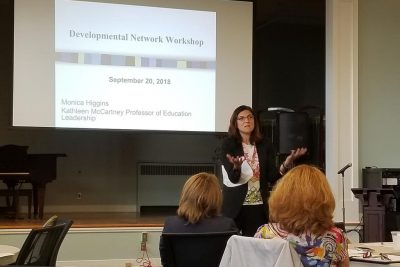
To help streamline the process and hold schools accountable for creating and implementing their plans, districts and state departments of education often created elaborate templates for how they wanted school improvement plans written. In some cases, states even created standard templates required of all schools and districts. Often, these were well-intentioned attempts to minimize the number of documents that schools had to submit. For example, a school might no longer have to submit a separate Title I plan as there was a universal improvement plan that covered everything. Sometimes the templates, either district- or state-mandated, tried to force the school to follow a certain process to generate its plans. The template could include, for example, questions about what data were used to generate the plan, what the analysis of these data revealed, and how community stakeholders were engaged to decide on the appropriate goals.
And yet, despite encompassing many rules in what appeared to be an attempt to institutionalize data-based decision-making and create meaningful change, processes to create the plan, and the plans themselves, infrequently included deep discussion about equity or changing practice — the primary process for producing results in schools. Moreover, these plans rarely created the impression that teachers were supposed to teach differently or reflect on how they thought about and understood their relationship to their students.
Perhaps it is the case that in your school or district you participate in an annual cycle of goal setting … with the sinking feeling that none of it will amount to real change.
This is strange, when you think about it, as the organizational consultant who is frequently cited as the instigator of data-driven planning, W. Edwards Deming (1986), was all about process. His book Out of the Crisis is a kind of manifesto about how generations of business owners had not paid enough attention to the processes being used in generating their results. Some of his ideas were translated into familiar slogans: “If you do what you’ve always done, you’ll get what you’ve always gotten,” “The definition of madness is doing the same thing over and over and expecting a different result,” and “Every system is perfectly designed to achieve the results it gets.”
Perhaps it is the case that in your school or district you participate in an annual cycle of goal setting, filling out templates to create a plan, submission of the plan for feedback and approval, and working with committees, departments, or grade-level teams to implement the plan—all with the sinking feeling that none of it will amount to real change. Perhaps you’re frustrated as the plan you created seems to have no life outside its place on the shelf. Perhaps you’re looking for suggestions for how to give the process more meaning and traction.
In that case, you’re in the right place, because that’s exactly what we’re going to do in this book.
Learn more about The Strategy Playbook for Educational Leaders.
Experts Say Cardona Nomination Marks Shift in Federal Education Policy
Meriden Record-Journal (Richard Schwab is quoted about Miguel Cardona’s nomination for the U.S. Education Secretary)
Leveraging Soft Skills to Improve College and Career Readiness
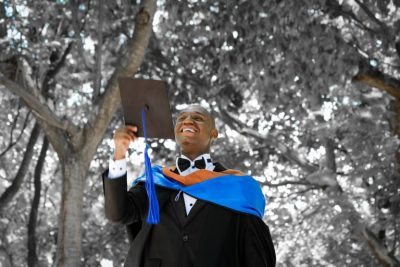
Editor’s Note: The following piece, featuring a new grant in support of research on college and career readiness for students with emotional and behavioral disorders, originally appeared on UConn Today.
The transition from high school to college or the workforce is a major one for all students. While high schools work to ensure their graduates are prepared, students with emotional and behavioral disorders (EBD) often find themselves lacking the non-academic skills they need to succeed.
Through a collaboration with Lehigh University, Neag School of Education associate professor Jennifer Freeman will develop an intervention to improve college and career readiness for students with emotional and behavioral disorders. This $500,000 grant is sponsored by the Institute of Education Sciences (IES). Freeman is a Co-PI with Lee Kern and Chris Liang at Lehigh University.
The team will develop a Supported College and Career Readiness intervention that builds on existing programs in schools.
“Our hope is to work with schools to develop the capacity to support kids with EBD, keep them in school and make sure they have the skills they need to be successful after high school,” Freeman says.
Students with or at risk for emotional and behavioral disorders are five times more likely to drop out of high school and almost 20% less likely to enroll in higher education than their peers. Emotional and behavioral disorders are characterized by problems such as impulsiveness, short attention spans, difficulty handling frustration, and refusing to follow rules. These kinds of behaviors pose significant challenges in and beyond high school.
“Our hope is to work with schools to develop the capacity to support kids with EBD, keep them in school and make sure they have the skills they need to be successful after high school.”
— Associate Professor Jennifer Freeman
The intervention will focus on soft skills. While many high school college or career preparation programs focus on academic preparation, many students enter college or the workforce without the social skills necessary to navigate interactions with professors and peers or supervisors and coworkers.
“Academics are a given,” Freeman says. “But schools tend to overemphasize academic skills in terms of college and career readiness. We’re really trying to articulate and emphasize the social skills kids need to navigate those environments.”
Freeman says without these skills, students struggle, especially if they are experiencing academic problems on top of it.
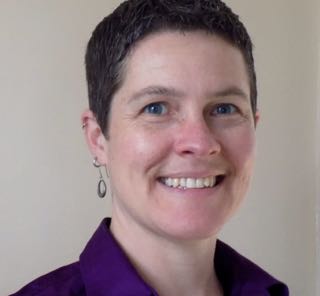
“As a college instructor, I see the thing that gets in the way for kids, aside from the academics, is their time management and their ability to advocate for their needs,” Freeman says.
This work will build on another IES funded project lead by Allison Lombardi and supported by Freeman to develop a measure of college and career readiness that goes beyond academic preparedness. This extensive measurement tool asks students to assess how they feel about their own abilities in areas like interpersonal engagement and transitioning to college or career. This new project will put that measure into practice.
The Supported College and Career Readiness (SCCR) intervention will include features such as direct instruction for soft skills, mentoring, and support for navigating course selection. Additionally, the intervention will focus on making career placement opportunities accessible to students with emotional and behavioral disorders.
“Our hope would be to develop an intervention that can be layered on top of what high schools are doing already that doesn’t require a ton of resources on their part but can help support this population more effectively,” Freeman says.
The group will launch a pilot study next year in a handful of schools in New England and Pennsylvania. After that initial study, the researchers will gather feedback from teachers and students and modify the program testing it in 12-15 schools for the second stage of the study.
The researchers hope this work will someday be successfully implemented on a wide scale to support the specific needs of this population setting them up for success immediately beyond high school and for the rest of their lives.
Freeman holds a Ph.D. from the University of Connecticut’s Neag School of Education. She is a partner with the National Center on Positive Behavior Interventions and Supports and a research scientist for the Center for Behavioral Education and Research. Her research focuses on positive behavioral interventions and supports, and classroom and behavior management.
Skipped Classes, Teacher Shortages, Mental Health Concerns: How Schools Are Taking On Pandemic Challenges
New England News Collaborative (Jennie Weiner is interviewed about education challenges due to the pandemic)
Leveraging Soft Skills to Improve College and Career Readiness
UConn Today (An IES research collaboration between Jennifer Freeman and Lehigh University is featured)
Fixing Connecticut School Finance: The Time is Now
CT Mirror (Preston Green and Robert Cotto, an educational leadership doctoral student, co-write a commentary on Connecticut school finance)
Letters About Literature Contest Now Underway for Conn. Students
Here’s Why Silver Linings Are Important to Education in 2021
Editor’s Note: Board of Trustees Distinguished Professor Sandra Chafouleas looks forward to the state of education in 2021 in the following piece, which originally appeared on Psychology Today, where she publishes a blog.
When 2020 began, we had no clue as to the changes coming to our children’s education. Looking to the new year, the only thing that seems certain is that uncertainty in school opportunity, format, and structure will continue as the conditions around us adjust. School will carry on as unpredictable and unprecedented.
Life in a virtual environment cannot truly be compared to face-to-face, yet a wide range of reactions have surfaced about the school experience. Substantial challenges with remote and hybrid learning have been noted, however, there has not been not a one-size-fits-all perspective regarding a best education option. Altered learning formats have brought confusion, struggle, and feelings of being overwhelmed for some whereas others have noted eagerness to engage new technology and creativity in adapting activities.
Varied reactions will remain, and we may be tired of being asked to look for silver linings, or bright prospects, to the changed education landscape. But here’s why it’s important to check our expectations and consider shifts in how we frame this school year.
“We may be tired of being asked to look for silver linings, or bright prospects, to the changed education landscape. But here’s why it’s important to check our expectations and consider shifts in how we frame this school year.”
— Sandra Chafouleas,
Board of Trustees Distinguished Professor
Promoting messages that this school year is a lost cause and that there will be tremendous gaps may contribute to the problem. This has been described as the Pygmalion Effect, which is a classic study in psychology about expectation bias. The researchers found that high expectations by adults can lead to better child performance and vice versa. In other words, our framing of the school year matters. The ways in which we share our expectations has potential long-term consequences for our children.
Despite the challenges to be acknowledged, we can recognize potential positives with regard to the changed education environment. To start, we can observe that frustrating and uncomfortable are features that can provide conditions for psychological growth, such as potential to respond to challenge, pursue high goals, and positive self-regard. Across all stages of life, we crave this balance of external accomplishment and inner fulfillment. Right now, we are faced with opportunity to help ourselves and those around us to frame the current situation as something that pushes us to grow.
Here are just a few more potential silver linings to think about adding to your family story.
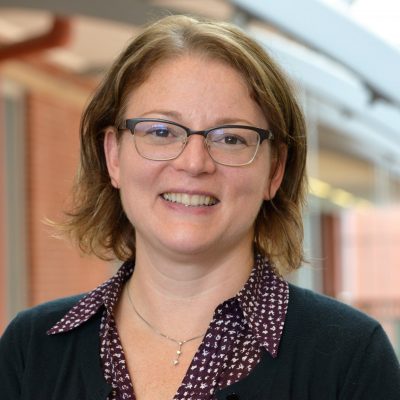
Flexibility in Structure.
Reduced availability of activities has opened blocks of time, creating a break from a perhaps overscheduled life. One substantial benefit is the opportunity to build and sustain a personal wellness plan. As an example, revised school times afforded through remote schooling offer flexibility as to when and where work gets done, opening the possibility of putting in place those sleep times endorsed by the American Academy of Pediatrics, particularly for teens.
This break also presents an opportunity to intentionally cultivate creativity – to experiment, play, reflect, and self-express – which is important to nurturing children’s emotional health. It’s related to cognitive flexibility, meaning the capacity to adapt behaviors like coping with uncertainty, pivoting problem-solving, and using change to energize. These skills are important to success in work, personal, and social life across all ages.
As we move forward, we also can use this newfound time to reflect on what could and should be added back to the “normal” routine.
Independence and Choice.
Along with flexibility in structure comes independence and choice in what we do and how we do it. Although we each need different types of supports to manage roles and responsibilities, there is greater opportunity to build skills in self-management. Self-management is the ability to effectively manage emotions, thoughts, and behaviors in different situations, and is a core competency in social and emotional learning.
A remote or hybrid learning environment provides a chance for our children to become more self-sufficient as they manage checking in, being ready, and following up with tasks. Some teachers have even reported that increased knowledge about and use of technology has been helpful in tracking student progress, and engaging in problem-solving earlier rather than waiting for bigger issues to arise. For example, families and teachers can work together with students in identifying unhealthy stress and adjusting appropriate task goals from start to finish. Given the potential for the future of work to include at least some remote experience, using this pandemic education situation to build strong self-management skills could be beneficial over the long-term.
Adaptability for Differences.
Perhaps an overlooked silver linking may present in how remote and hybrid learning supports adaptability for differences. Issues in equity around access, structure, and supports existed prior to the pandemic. The chaos that began in spring 2020 brought heightened attention to the detailed planning needed to support school capacity to adapt for differences as schools re-opened in the fall. For example, some districts have used their data systems to maximize in-person learning opportunities for students at risk, and others have strengthened case coordination processes for students with disabilities.
For some students with disabilities, increased comfort with and use of virtual technology has created new opportunities for socializing in ways that were not previously present, which has also led to further connections around school tasks such as assignments. Others have used virtual learning as an opportunity to build skills in independence, and others have strengthened family-school partnerships via enhanced communication and family involvement in learning.
In addition, the modified school environment has brought opportunity to engage in conversation about structural racism. School leaders are evaluating their policies and procedures around disciplinary practices and racial bias in schools, and some families are talking about remote learning as providing respite from racial microaggressions.
Family Connection.
Finally, an occasion to evaluate our relationships with both immediate and extended family has appeared. Time at home has provided an opportunity to engage more meaningfully in conversation and do things collaboratively, whether it be simple activities like eating together or the more complex home improvement project. Finding new ways to connect with extended family – like detailed conversations with grandparents to hear about their life experiences – can be a fun new challenge.
Although stressful at times, these connections have strengthened family relationships, bringing personal feelings of gratitude and even increased care for the thoughts and feelings of other family members [Yes, even among siblings].
In sum, monitoring our children’s social, emotional, and behavioral well-being is important given concerns about virtual schooling. We have the potential, however, to frame the situation in a way that unclutters the path so our children are able to emerge with resilience, adaptability, and life skills that might surprise us all. Using this experience to strengthen skills in flexible thinking, choice making, self-sufficiency, adapting to manage needs, and social connection may help prepare our children to successfully respond to the environments they will encounter in future education endeavors and throughout life.
As we press forward in 2021, focusing on silver linings and the possibilities they bring may offer one positive step in ensuring the learning path is full of high expectations for our children.
Access Sandra Chafouleas’ Psychology Today post on education in 2021, as well as her past blog posts, online.
Here’s Why Silver Linings Are Important to Education in 2021
Psychology Today (Sandra Chafouleas writes new blog post)
